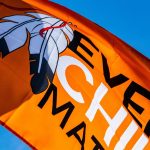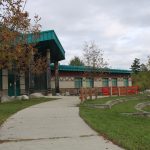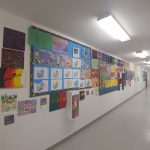Community Spotlight: Seven Generations Education Institute
Seven Generations Education Institute derives its name from ancient Indigenous philosophy. Decisions made in the present should be sustainable seven generations into the future. For the past three years, we have seen how committed the educators and staff are to this principle. We’ve enjoyed working with them to achieve this important goal. The resources we’ve created together reflect the rich cultures of the Seven Generations Education Institute’s ten founding Nations. They will be accessible for educators and learners for years to come.
Respecting Sacred Teachings at Seven Generations Education Institute
During the first year of our collaboration, we worked with educators, Elders, and Knowledge Keepers. We created resources for dimensions of wellness, feast bags, and the significance of the Sweat Lodge, tobacco offerings, and naming ceremonies. Seven Generations Education Institute chose to keep some of these resources private. They are not accessible to other school partners using Learning Bird. “There are certain ceremonies, Protocols, and traditions that are sacred and specific to a certain place or Nation. Some communities want that knowledge to remain in the community,” said Natalie Gilbert, Learning Bird’s Education Content Manager. Our commitment is to respect these wishes. We ensure that every school and community has control over when and how they share their resources.
Sky Woman
During the 2017/18 school year, we worked with Seven Generations Education Institute to build resources on the Anishinaabe Creation story of Sky Woman from Basil Johnston’s Ojibway Heritage. The resource kit includes slideshows, a handout, and a video that introduces learners to the story of Sky Woman. Together with educators, staff, and learners at the school, we were able to bring this beautiful story to life. The video featured illustrative paintings by learners and narration by Julija Graham, an educator at the high school. “It’s great for learners to see their creative work reflected in resources built for the school and hear voices from the community that they recognize. It keeps content localized and incorporates the talents of learners and other community members,” said Natalie.
Kay-Nah-Chi-Wah-Nung
Last year, our work with Seven Generations Education Institute focused on creating resources about Kay-Nah-Chi-Wah-Nung, Anishinaabemowin for “Place of the Long Rapids.” This site was an important place of early habitation and ceremonial burials. The resources discuss the historical and cultural significance of Kay-Nah-Chi-Wah-Nung. That includes signing Treaty 3 and the forced amalgamation of Indigenous Peoples in the region into the Rainy River First Nations by the Canadian government.
The activities in the kit encourage learners to think about how the construction of the Kay-Nah-Chi-Wah-Nung Historical Centre and a traditional roundhouse symbolize the resilience of the Rainy River First Nations. The resource kit includes an interview with Elder Gilbert Smith. He shares his knowledge of the burial mounds at Kay-Nah-Chi-Wah-Nung, the Manitou Mounds.
Celebrating Indigenous Knowledge at Seven Generations Education Institute
This year, we will be working with Elders and Knowledge Keepers from Rainy River First Nations to create resources for Seven Generations Education Institute. Earlier this month, Natalie and Learning Bird’s Education Training Manager Joelle Chemali documented the school’s Fall Feast. “There were 14 stations set up so learners could experience different activities, including Métis jigging, bannock making, storytelling, and drumming. What I really liked about it was that everyone was happy and willing to share the knowledge and information they had about each activity,” said Joelle.
Honouring Survivors
One station helped learners understand the impact of the residential school system on individuals, communities, and Nations in the region. Elder Kelvin Morrison spoke to learners about some of his painful experiences at a residential school. Kelvin also shared his story with us on camera. Joelle noted the significance of this for learners and others. “It’s important to make people more aware about what actually happened in these schools, and also to make them aware of the impact the residential school system had on Survivors’ children, grandchildren, and communities.”
Some of our partners choose to keep residential school resources private for in-community use only. Others are comfortable sharing their stories and experiences to benefit all learners on the Learning Bird platform. We are very grateful to have worked with several residential school Survivors over the years and have assisted in documenting their traumatic experiences and stories of resilience for future generations.
Culturally-Relevant Resources
Our team looks forward to creating engaging, culturally-relevant resources. This year, Natalie and Joelle collected the video footage and audio materials while on-site at Seven Generations Education Institute. They have seen firsthand how committed the educators and administrators are to helping learners succeed and connect with their culture.
“Principal Sean Taggart is really involved and listens to his staff very carefully. Over the years, their staff hasn’t changed much, which means educators enjoy their work and are dedicated to their learners. There’s a strong sense of partnership, and they’re all working together to achieve the same goal, which is amazing to see,” said Joelle. She’s already looking forward to working closely with the educators again when she travels in the new year. She will be returning to offer educators one-on-one coaching. Educators will learn how best to optimize and integrate the resources we’ve created into their year plans.






